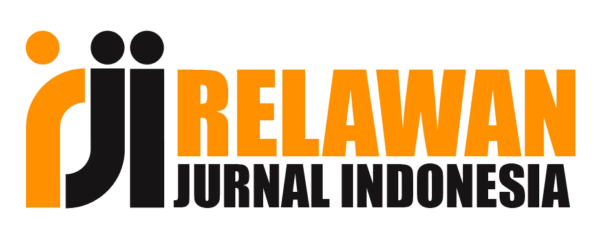Rancang Bangun Panduan Eksperimen Digital Berbasis Augmented Reality Pada Materi Hukum Kepler
Abstract
Penelitian ini bertujuan untuk menyusun panduan eksperimen digital berbasis Augmented Reality (AR) pada materi Hukum Kepler. Penelitian dilatarbelakangi oleh kurangnya kegiatan pembelajaran yang dapat membantu peserta didik untuk menganalisis gerak planet menurut Hukum Kepler (sesuai dengan KD 3.8 pada kurikulum 2013) sehingga peserta didik mengalami kesulitan untuk memahaminya. Metode penelitian yang digunakan yaitu Research and Development (R&D) dengan model 4D yang kemudian dimodifikasi menjadi 3D, terdiri dari tahap Define, Design dan Develop. Untuk mengukur kualitas panduan eksperimen digital berbasis Augmented Reality dilakukan respon akademik untuk komponen materi dan media. Panduan eksperimen dikembangkan berdasarkan aspek-aspek inkuiri, sehingga dilakukan juga respon akademik untuk kesesuaian komponen panduan eksperimen digital dengan aspek inkuiri. Hasil respon akademik diolah dan dianalisis menggunakan Many Faceted Rasch Model. Kemudian, dilakukan uji terbatas produk kepada 7 peserta didik kelas XI di salah satu SMA di Kota Bandung menggunakan angket tanggapan peserta didik dan soal uji rumpang. Hasil penelitian menunjukan bahwa panduan eksperimen digital berbasis Augmented Reality yang dikembangkan memenuhi kriteria media, materi dan aspek inkuiri dengan hasil validasi terkualifikasi “layak” disertai dengan tanggapan yang positif dari peserta didik sehingga produk dapat digunakan untuk tahap selanjutnya (Dissiminate).
Kata Kunci: Augmented Reality; Eksperimen; Digital; Inkuiri; Kepler
ABSTRACT
This study aims to compile a digital experiment guide based on Augmented Reality (AR) on Kepler's Law material. Research is motivated by the lack of learning activities that can help students to analyze planetary motion according to Kepler's Law (according to KD 3.8 in the 2013 curriculum) so that students have difficulty understanding it. The research method used is Research and Development (R&D) with a 4D model which is then modified into 3D, consisting of the Define, Design and Develop stages. To measure the quality of the Augmented Reality-based digital experiment guide, an academic response was carried out for the material and media components. The experimental guide was developed based on the aspects of inquiry, so that an academic response was also carried out for the suitability of the digital experiment guide component with the inquiry aspect. The results of academic responses were processed and analyzed using the Many Faceted Rasch Model. Then, a limited product test was carried out on 7 students of class XI in one of the high schools in Bandung using student response questionnaires and interlocking test questions. The results showed that the Augmented Reality-based digital experimental guide developed met the criteria for media, material and aspects of inquiry with the validation results that were qualified "feasible" accompanied by positive responses from students so that the product could be used for the next stage (Dissiminate).
Keyword : Augmented Reality; Experiment; Digital; Inquiry; Kepler
Full Text:
PDF (Bahasa Indonesia)References
Arici, F., Yildirim, P., Caliklar, Ş., & Yilmaz, R. M. (2019). Research trends in the use of augmented reality in science education: Content and bibliometric mapping analysis. Computers and Education, 142(August), 103647.https://doi.org/10.1016/j.compedu.2019.103647
Karagozlu, D., & Ozdamli, F. (2017). Student opinions on mobile augmented reality application and developed content in science class. TEM Journal, 6(4), 660–670. https://doi.org/10.18421/TEM64-03
Iordache Dr, D. D., Pribeanu, C., & Balog, A. (2012). Influence of specific ar capabilities on the learning effectiveness and efficiency. Studies in Informatics and Control, 21(3), 233–240. https://doi.org/10.24846/v21i3y201201
Wojciechowski, R., & Cellary, W. (2013). Evaluation of learners’ attitude toward learning in ARIES augmented reality environments. Computers and Education, 68, 570–585. https://doi.org/10.1016/j.compedu.2013.02.014
Yoon, S., Anderson, E., Lin, J., & Elinich, K. (2017). How augmented reality enables conceptual understanding of challenging science content. Educational Technology and Society, 20(1), 156–168.
Chen, C. ping, & Wang, C. H. (2015). Employing augmented-reality-embedded instruction to disperse the imparities of individual differences in earth science learning. Journal of Science Education and Technology, 24(6), 835–847. https://doi.org/10.1007/s10956-015-9567-3
Sumadio, D. D., & Rambli, D. R. A. (2010). Preliminary evaluation on user acceptance of the augmented reality use for education. 2010 2nd International Conference on Computer Engineering and Applications, ICCEA 2010, 2, 461–465. https://doi.org/10.1109/ICCEA.2010.239
Augmented Reality and Virtual Reality Web Environment to Visualizing the Planets of The Solar System. (2019). December.
Lindner, C., Rienow, A., & Jürgens, C. (2019). Augmented Reality applications as digital experiments for education – An example in the Earth-Moon System. Acta Astronautica, 161(February), 66–74.https://doi.org/10.1016/j.actaastro.2019.05.025
Darmaji, Astalini, Kurniawan, D. A., Parasdila, H., Irdianti, Hadijah, S., & Perdana, R. (2019). Practicum guide: Basic physics based of science process skill. Humanities and Social Sciences Reviews, 7(4), 151–160. https://doi.org/10.18510/hssr.2019.742
Cai, S., Chiang, F. K., & Wang, X. (2013). Using the augmented reality 3D technique for a convex imaging experiment in a physics course. International Journal of Engineering Education, 29(4), 856–865.
Akçayir, M., Akçayir, G., Pektaş, H. M., & Ocak, M. A. (2016). Augmented reality in science laboratories: The effects of augmented reality on university students’ laboratory skills and attitudes toward science laboratories. Computers in Human Behavior, 57, 334–342. https://doi.org/10.1016/j.chb.2015.12.054
Hasanah, U., Hamidah, I., & Utari, S. (2017). Trained Inquiry Skills on Heat and Temperature Concepts. Journal of Physics: Conference Series, 895(1). https://doi.org/10.1088/1742-6596/895/1/012103
Thiagarajan, S.;Semmel, D. S.;& Semmel, M. I. (1920). Instructional Development for Training Teachers of Exceptional Children: A Sourcebook. Indiana University Bloomington.
Nesbit, J.;Belfer, K.;& Laecock, T. (2009). Learning Object Review Instrument (LORI) Version 2.0. 3-11.
Lou, Y., Blanchard, P., & Kennedy, E. (2015). Development and validation of a science inquiry skills assessment. Journal of Geoscience Education, 63(1), 73–75. https://doi.org/10.5408/14-028.1
Aprinaldi. (2019). Augmented Reality (AR) Berbasis Android di Sekolah Menengah Kejuruan. Bandung: UPI.
Linacre, J. (2013). A user's guide to Facets: Rasch measurement computer program [Computer program manual]. Chicago: MESSA Press.
Sumintono, B., Widhiarso, W., & Mada, U. G. (2014). untuk Penelitian Ilmu-Ilmu Sosial. November.
DOI: https://doi.org/10.17509/wapfi.v6i1.32387
Refbacks
- There are currently no refbacks.
Copyright (c) 2021 Kirana Nur Oktiani Koswara, Arif Hidayat, Winny Liliawati

This work is licensed under a Creative Commons Attribution-ShareAlike 4.0 International License.
The Journal Wahana Pendidikan Fisika http://ejournal.upi.edu/index.php/WapFi/ is licensed under a Creative Commons Attribution-ShareAlike 4.0 International License
The Journal WaPFi (Wahana Pendidikan Fisika).
All rights reserverd. pISSN 2338-1027 eISSN 2685-4414
Copyright © Faculty of Mathematics and Science Education (FPMIPA) Universitas Pendidikan Indonesia (UPI)










